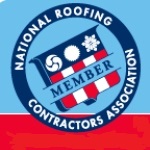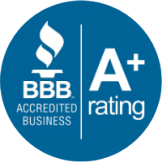Long Island Roofing: Article About Roof Underlayment
This material, which is known for its resistance to fatigue, is used in a number of applications, including synthetic roofing underlayment. The polypropylene is known for its strength and its ability to last, which makes it a popular material to use in roof construction as it will not need to be replaced as often as other types of underlayment.
Long Island roofing contractors answer a question: What type of underlayment should I use on my home?There are several factors that should determine what type of underlayment you may wish to use. These include your budget, the environment and the material construction. While your budget is pretty straightforward, the environment can play a big role. For example, if you live in an area that is at risk for fires or that sees a lot of rain annually, you'll most likely want to chose a material that is made to protect against those elements.

As a homeowner, having an understanding of your roof's components is always a good idea should your roof require some work or if you want to replace a component with a higher-quality of material. When it comes to your roof, the underlayment is one of the most important components that protects your home's structure against the outside elements.
Some types of underlayment are more resistant to the environment than others. If you are interested in learning what type of underlayment has been used on your roof, talk to your local Long Island Roofing contractor. Not only will they help you determine if your roof's underlayment is adequate for your specific needs, they'll also help you determine what material will work better if you wish to upgrade.
The underlayment is the protective layer that is installed over the roof's decking and underneath the shingles or other outer roofing material. The protective layer is also waterproof and adds a layer of protection against any water that makes it past the outer roofing material.
Traditionally, the underlayment was made from building paper that had been saturated in asphalt, a material that has natural water-resistant qualities.
A roofing professional from Long Island Roofing can answer any question you have about architectural roofing or GAF roofing materials.
Today, there are a number of different types of underlayment that can be used depending on the environment where the home is located and your personal needs. The most common types include asphalt-saturated material and non-bitumen synthetic material.
The traditional asphalt-saturated felt underlayment is an organic product that provides your home with immediate protection against the elements. This type of underlayment will also provide protection for asphalt shingles from any resin that is in the underlying decking or sheathing, which can cause damage to the shingles. While this is the most inexpensive option out on the market, it can tear easily and can contribute to the build-up of condensation.
Synthetic underlayments are made from a variety of materials, including polypropylene. This type of underlayment has been designed to be tear-resistant and, unlike asphalt-saturated felt underlayment, is considered to be waterproof. Additionally, this material is self-adhering, meaning that they will not wrinkle over time and will provide your home with long-term protection against snow, ice and water.
The final type of roofing underlayment is known as "self-adhering ice-and-water" barriers. These are generally used in areas that experience a large amount of rain and snow throughout the year. They are designed to provide your home with protection against the formation of ice on the roof, which can melt from the inside out and cause serious damage to your home's structure if the moisture becomes trapped under the outer layer of roofing material.









